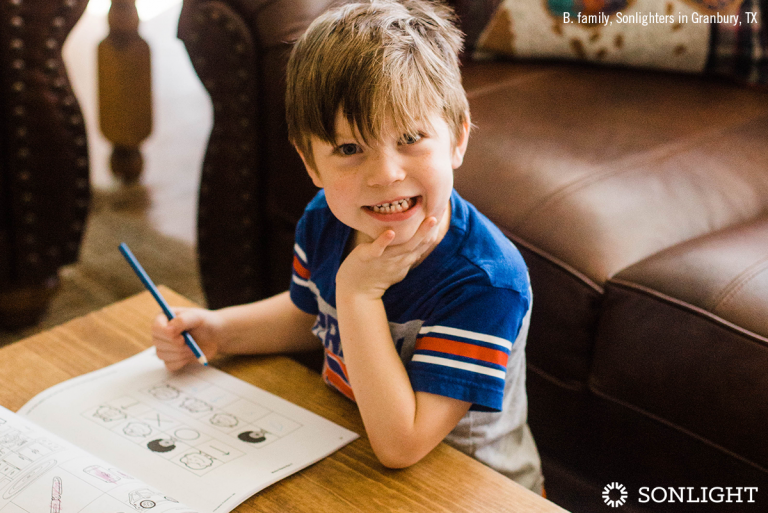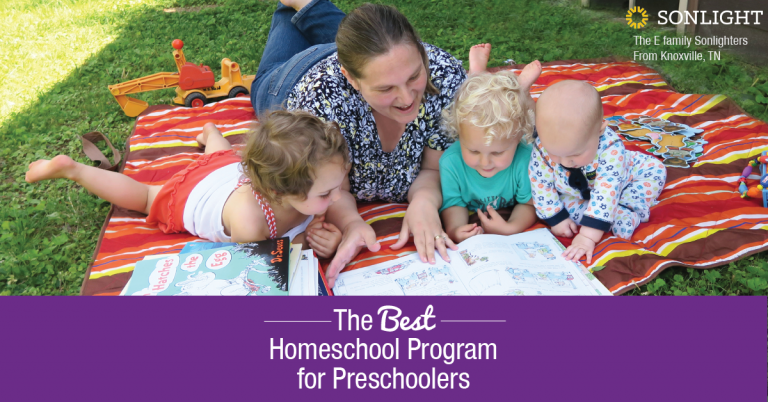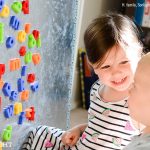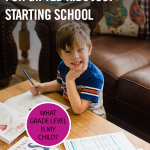
Parents of young, gifted children frequently wonder about grade level when it comes time to start schooling—"What grade is my child?" This question seems all-important because grade level is often used to determine when to start formal schooling, what types of educational options to pursue, what curriculum to purchase, daily workload schedules, and academic expectations.
It’s very tempting to push a child ahead a grade level or two. Your precocious four- or five-year old might be reading at a first or second grade level and be doing simple mental math. This child would be bored in a traditional school, so it’s easy to assume they should be placed in first or second grade instead.
But when you homeschool with Sonlight, moving a young child up a grade or two is not necessary and often not even advisable.
Getting Started Early
I knew my oldest was gifted from birth. So it was no surprise when she started walking and talking early, knew her shapes and colors long before her second birthday, or started reading before age 3. By three-and-a-half, I couldn’t wait to jump-start the whole school process! I took her to a kindergarten screening so the school would let her in early. They insisted she was just too young and too immature to do well in kindergarten, no matter what her ability was. Try again at age five, they suggested. The local private school agreed.
Homeschooling as a Last Resort
Frustrated, I decided to try homeschooling for a year. I ordered every catalog I could get my hands on that spring. By summer, I couldn't stop reading the Sonlight catalog; I knew it was the curriculum for us!
Over and over I heard the same advice from experienced moms on various help groups.
- “Start one year below your child’s grade level.”
- “Don’t push things. Start off a little lower, because Sonlight is already advanced.”
- “The PreK level is perfect for kindergarten. It’s more than most children get in kindergarten.”
Later, I would look back upon this advice as my first sign that grade levels are only one aspect to learning.
Still, I had a child who would be 4 in the fall but was doing first and second grade level work already at home. I decided to go with the Sonlight Kindergarten program, figuring it would be too easy and at least one level below where she “really” was. (It was called Core K at the time, but now it’s called HBL A World Cultures.)
A Temporary Fix for the Gifted 4-year-old
We dived in immediately after Box Day, not waiting for the school year to officially start. She was just shy of 4 and an eager learner. We read through dozens of great books.
But something wasn’t quite right. She sat through the books—tolerated them even—but she didn’t love them. She wasn’t engaged. I thought I must be doing something wrong.
However, at the very end of the year, I saw her light up and start truly enjoying the books. It was like a switch turned on.
I realized what I had done wrong was just working at a level too high, too early.
I repeated the entire level again with her at age 4.75 at a faster pace, and it went so much better. This was when I realized interest level doesn’t always equal grade level.
I had always planned to put my child into kindergarten at public school at the end of the year. But when fall came around again, I realized even though we hadn’t had the best year, my daughter was still advanced and would be bored in kindergarten. I realized that homeschooling was the better option.
Falling in Love and Going Beyond
That following year, I fell in love with Sonlight. Each book was so interesting and engaging, even my young son, who was 2 at that time, was enjoying some of the easier books.
When my younger son turned 4, I started him in the PreK program, even though he was showing signs of being more gifted than his sister. Truthfully, it was a bit easy, but so perfect for him in many ways:
- He was asking questions about things like quarks and atoms.
- He was building levers.
- He wanted to know more about other countries.
He was able to go so far beyond the simple reading, writing, and math I had expected preschool to be about, and was learning about science and nature, cultures and the world—things most kindergartners know nothing about.
And he was loving every minute of it. This was when I realized we didn’t have to limit our children to grade level materials for them to thrive.
What About Grade Levels?
When I first started homeschooling, grade levels seemed so important. Getting my daughter into that kindergarten class at age 4 seemed vital. Now, 14 years later, I can’t even remember which grade level any of my children are in without stopping to count.
Sonlight doesn’t require your child to be in a single grade level at all. With Sonlight, your children progress by ability level, and what the grade levels say on the website might not line up with where your child is ability-wise.
For example, I have a 6-year-old doing
She is enjoying every minute of this mix of materials, ranging from kindergarten to third grade.
Sonlight’s website makes it easy to build a program using exactly the right levels for each child. Children don’t need to be in a grade to get a good education.
So, what grade level is my daughter today? Well, as an answer, I’d like to quote a passage from the book Understood Betsy.
“Why—why,” said Elizabeth Ann, “I don't know what I am at all. If I'm second-grade arithmetic and seventh-grade reading and third-grade spelling, what grade am I?”
Understood Betsy in History / Bible / Literature B
The teacher laughed at the turn of her phrase. “You aren't any grade at all, no matter where you are in school. You're just yourself, aren't you? What difference does it make what grade you're in! And what's the use of your reading little baby things too easy for you just because you don't know your multiplication table?”
If you aren't sure what levels to purchase or how to customize your package, we have homeschool consultants available to help. Click here to schedule an appointment.









